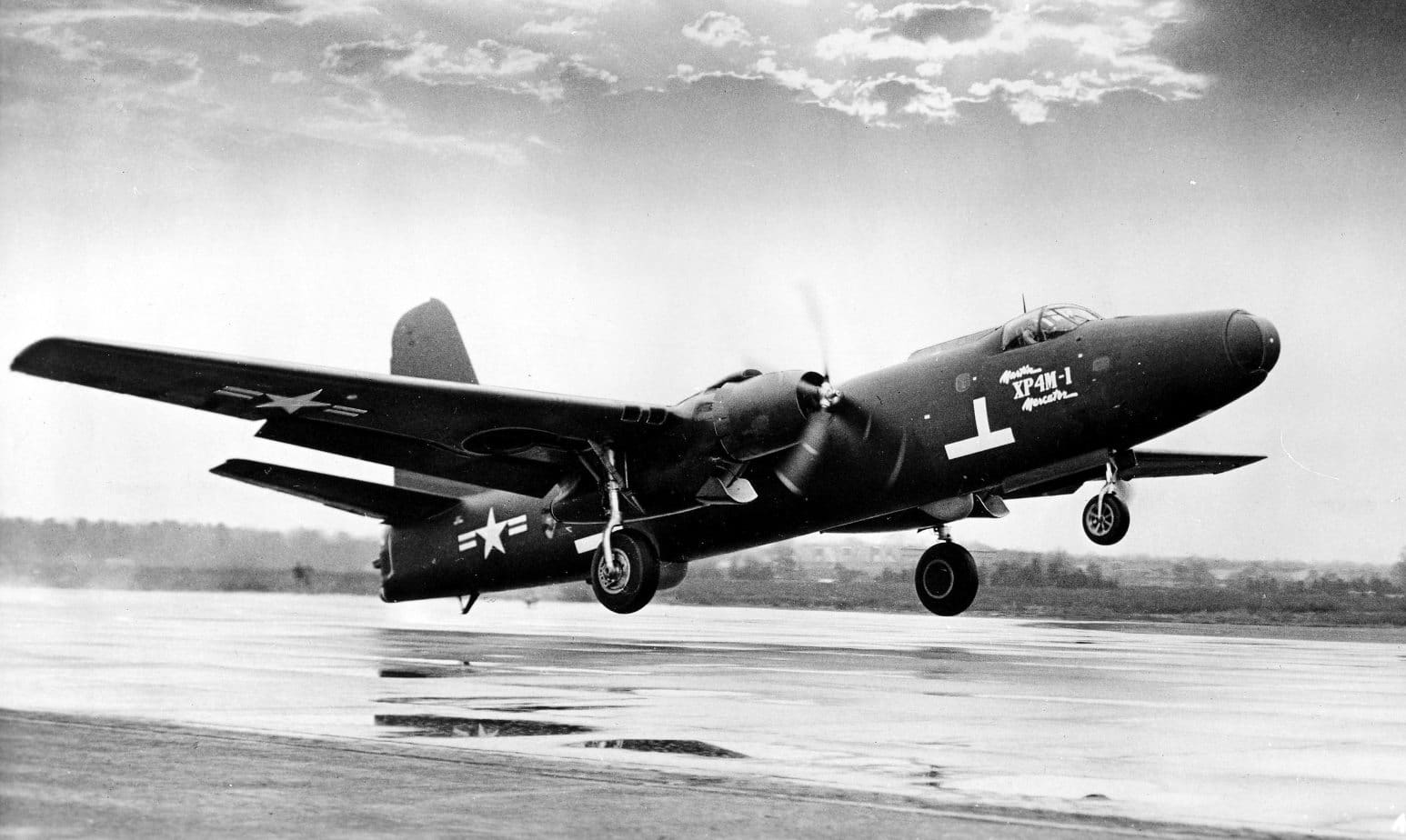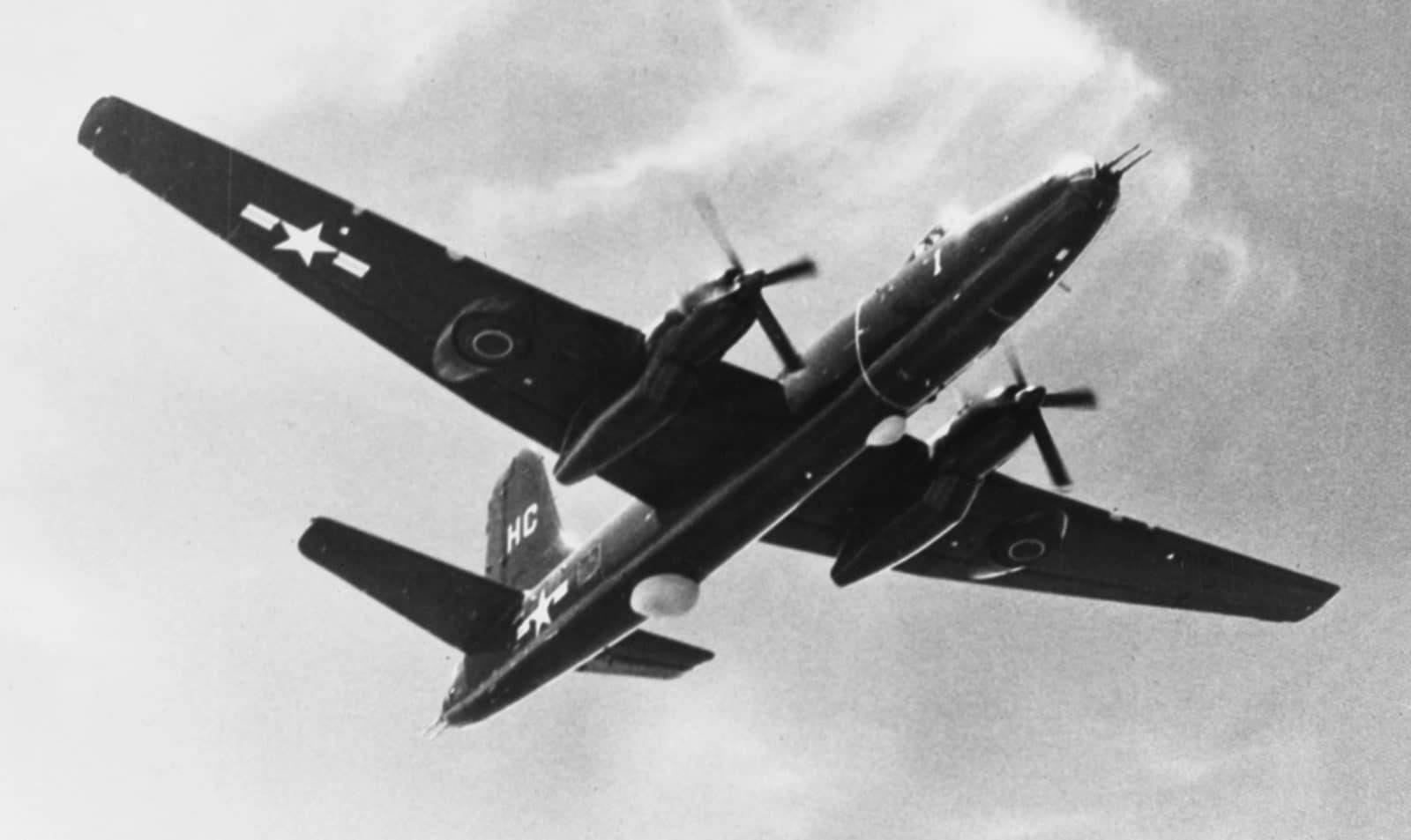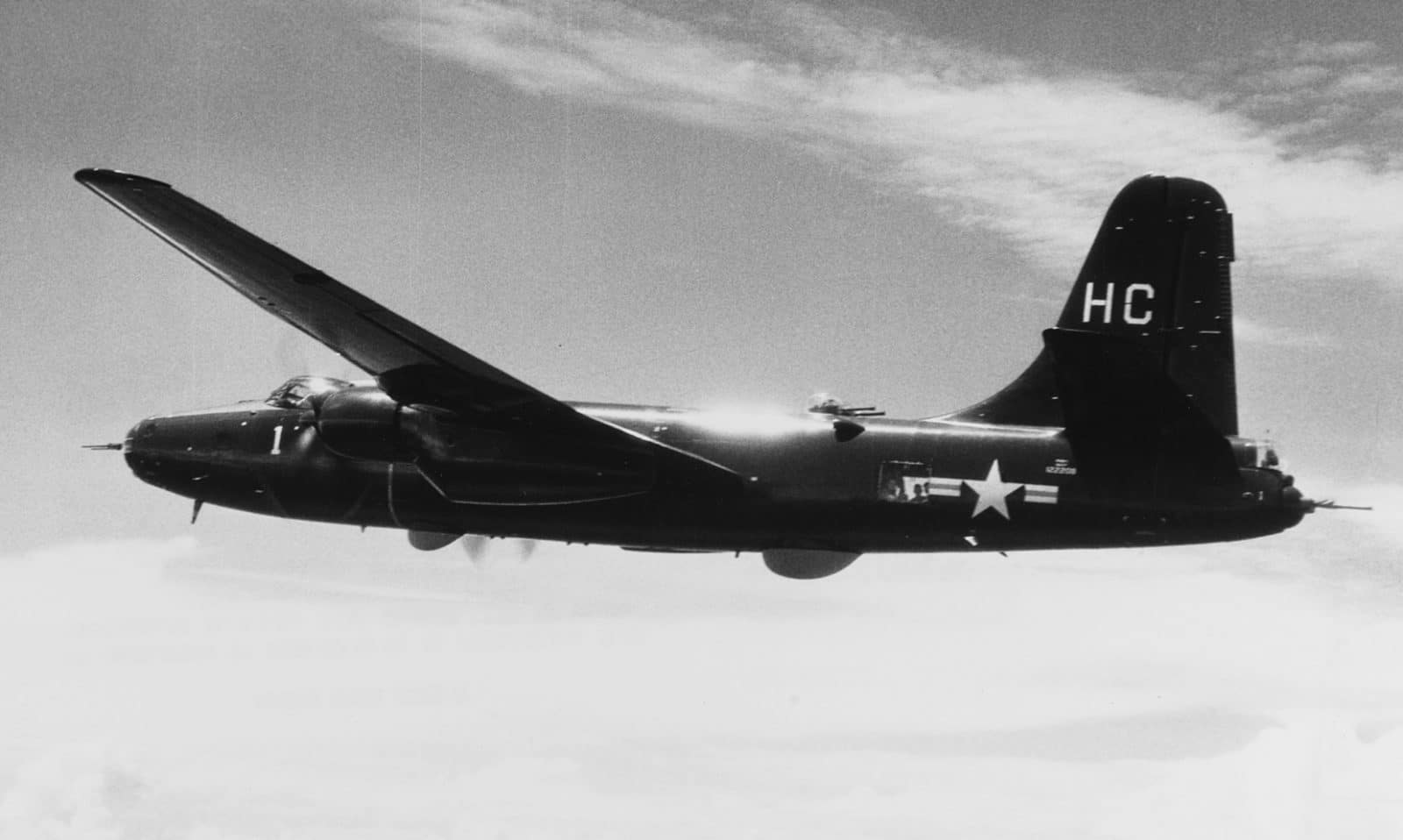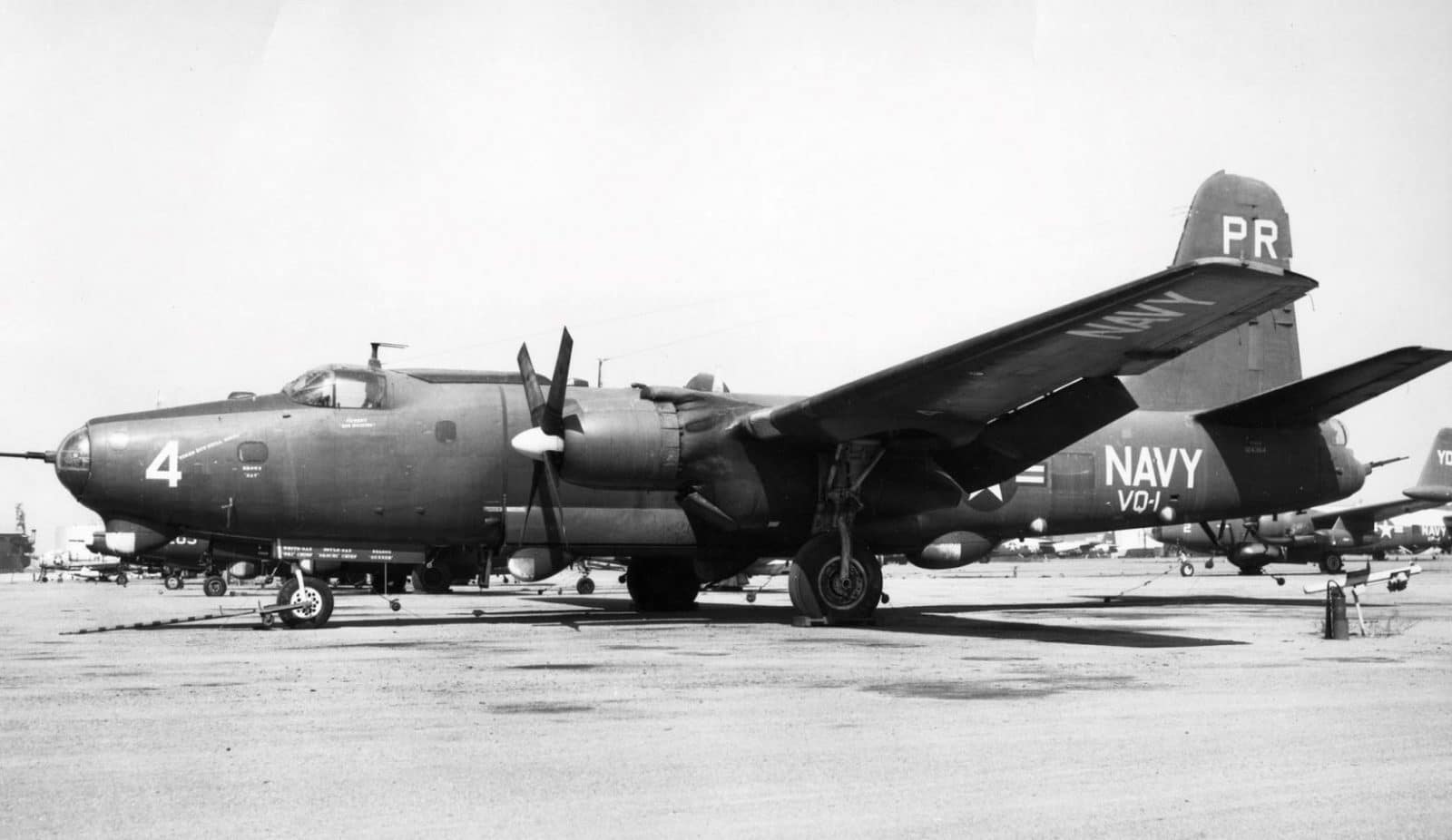Martin’s P4M Adapted to the Job That Was Available and Did That Risky Job Well
Martin’s P4M Mercator maritime reconnaissance aircraft was built as a potential replacement for the Consolidated PB4Y-2 Privateer but lost out to the Lockheed P2V Neptune for the role. Development of the aircraft, initially designated Project 219 by Martin, began all the way back in 1944. The resemblance between the Mercator and the Neptune was remarkable, especially to the early variants of the P2V. This would eventually play into the hands of the Mercators.

The Hybrid Design That Stuck Around
But wait- didn’t Mercator development end when the P2V was chosen as the Navy’s new long-range maritime patrol and reconnaissance aircraft? Not really. In fact, the Navy, somewhat quietly and with little fanfare, ordered 19 P4Ms. These aircraft were larger, heavier, considerably faster, and longer-legged than the Neptune. The P4M was powered by a pair of Pratt & Whitney R4360 Wasp Major 28 cylinder radial piston engines turning four-bladed AeroProducts propellers. But mounted in the aft portion of those engine nacelles lurked a pair of Allison J33-A-23 turbojet engines. That’s right! The Mercator was a hybrid.

Characteristics of a Cold War Warrior
The other design characteristics of the Mercator were similar in many ways to those of the Neptune. First flown on 20 October 1946, the XP4M-1’s performance did not disappoint. Distinguishing P4M features included different wing cross-sections inboard and outboard of the nacelles, a vertical stabilizer that was slightly offset from the fuselage centerline to counteract torque from the powerful piston engines, and a long internal bomb bay enabling the aircraft to carry a wider variety of ordnance and auxiliary fuel tanks internally.
The jet engines, whose intakes were located behind and below the radial engines, burned the same fuel as the piston engines, obviating the need for separate fuel systems. Production P4M-1s were to be armed with nose, dorsal, and tail gun turrets.

Keeping It On the Down Low
The Navy, mindful of the fact that the Mercator’s bomb bay configuration and long range made it a capable high-speed aerial minelaying platform, quietly ordered 19 P4M-1s in 1947- the first of which rolled out in 1949.
These aircraft entered service with Patrol Squadron TWO ONE (VP-21) Black Jacks (call sign Airmail) on 28 June 1950. On 1 July 1951, the Black Jacks flew their Mercators from Naval Air Station (NAS) Pensacola in Florida to San Diego, then to NAS Alameda in California, and on to Seattle, Washington. That’s about 6,500 miles worth of flying, and VP-21 did it with every aircraft operational for every leg and nothing more than routine maintenance required.
P4M-1s were equipped with the same AN/APS-33 X-band airborne search radar as the Grumman S2F Tracker, the Neptune, and the Navy’s ZPG-1W and ZPK antisubmarine blimps.

Bumpy Lumpy Ferrets
Somehow, the Black Jacks also found time to deploy to NAS Port Lyautey in French Morocco. However, VP-21 transitioned to the Lockheed P2V-6 Neptune in February of 1953. The Mercator did replace the Privateer, but not as a maritime patrol and reconnaissance platform. The Mercators were modified to perform electronic reconnaissance/signals intelligence (SIGINT) work instead. Designated P4M-1Q, these “ferret” aircraft were equipped with all manner of electronic surveillance equipment along with crews expanded from nine to 14 or more to operate it. They also sprouted an assorted collection of lumps, bumps, and blades housing antennae and sensors.

Tickling Dragons and Bears
The crews assigned to fly P4M-1Qs trained with VC-11 Early Elevens at NAS Miramar in California before moving to their operational squadrons. The shadowy outfit eventually designated VQ-1 World Watchers operated P4M-1Qs out of NAS Sangley Point in the Philippines and later from NAS Iwakuni and NAS Atsugi in Japan.
They flew long-range missions off the coasts of China, Russia, North Korea, and Vietnam, among other places. Here, the resemblance to the P2V paid off. Mercators often impersonated Neptunes during their 14-hour missions- even going so far as to use Neptune-equipped Patrol Squadron call signs and wearing spurious Neptune squadron markings and Bureau Numbers (BuNos). It also helped that most of these missions meant to “tickle” enemy defenses were flown in the dead of moonless nights with navigation lights extinguished.

Costly Losses During Cold War Missions
Mercator missions were high-risk and not without loss. The 16-man crew of a VQ-1 Mercator was killed when it was attacked by Chinese fighters near Shanghai on 22 August 1956. Another VQ-1 P4M-1Q was heavily damaged by North Korean MiG-17 Frescoes on 16 June 1959. Another shadowy outfit, this one eventually designated VQ-2 Batmen, operated Mercators in the Atlantic and Mediterranean out of NAS Port Lyautey. VQ-2 lost a P4M-1Q with its entire crew when it crashed in the Mediterranean after being attacked by Soviet MiGs. VQ-2 lost a second aircraft and its pilot when it was forced to ditch in the Med on 6 February 1952.

Sterling, But Largely Unknown Service
Mercators did a risky but critically important mission during a time when the Cold War could suddenly go hot at the push of a button. Their crews were heroes who, for the most part, were and still are anonymous. However, their exploits are appreciated and respected by Cold Warriors.
By the time the 1950s drew to a close, the Mercators were being replaced by Lockheed WV-2Q (later EC-121M) Warning Stars, Douglas A3D-2Q (later EA-3B) Skywarriors, and a few still-shadowy World War II-vintage bombers used for the kind of very specialized electronic warfare for which the Mercators might not have been built, but to which they adapted quite well.
VQ-1 retired its last P4M-1Qs at NAS Atsugi on 2 July 1960. Not a single intact Mercator airframe remains- a sad epitaph for a special specialist aircraft.


Japanese put two jet engines on them (two props and two jets) and flew them routinely out of Atsugi when I was there 75-82.
Beautiful airplane. And skinny. To get from front to back you had to crawl.
The ASW version had a big, very big, light bulb on the wing tips, to see submarines under the water. It was air cooled, so if you turned it on when you weren’t flying, it melted.
Bill just read this article. My father flew on this plane out of Port Lyautey. He passed away last year but there are few of VW-2 Det-A left.
Thank you for the article.